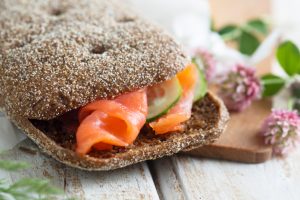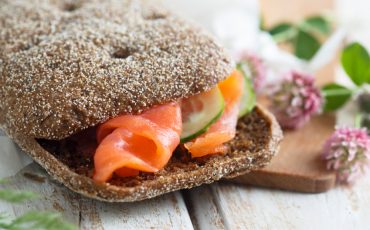 The Nordic diet is based around both the indigenous produce and what has grown well in the northern hemisphere through history: whole grains, root and green vegetables, fatty fish, poultry and wild game, berries and herbs – produce that will provide a super-healthy and balanced diet.
The Nordic diet is based around both the indigenous produce and what has grown well in the northern hemisphere through history: whole grains, root and green vegetables, fatty fish, poultry and wild game, berries and herbs – produce that will provide a super-healthy and balanced diet.
Grains
The grains used are those suited to cool climates – spelt, rye, oats and barley, all of which are high in fibre. But beware: these can be as refined and processed as most wheat flours, so it is vital to buy good-quality whole grains and wholegrain flours. Eat whole grain in salads, porridge or for dinner instead of potatoes or rice. Bake your own bread (see breads for inspiration), or buy from an artisan baker. Avoid mass-produced bread, which has little nutritive value and is full of additives to make it last.
Vegetables
Cabbages of all kinds – white, red, Savoy and pointed – together with their close relatives kale and Brussels sprouts, grow well in cold climates. They are full of flavour and can be cooked in many different ways.
Root vegetables are also important vegetables, especially in autumn and winter. They store well, and are versatile, filling and fuelling. Don’t just stick with the usual potatoes and carrots: try beetroots, radishes, turnips, celeriac, parsnips, Hamburg parsley, Jerusalem artichokes, salsify and kohlrabi.
Green vegetables such as nettles, ramps (ramsons), Swiss chard, asparagus, peas, spinach, lettuce and leeks provide us throughout the spring and summer with a wide range of nutrients. Garlic and onion are also an important base of Nordic cooking all year round, both when it comes to flavour and nutrients.
Fish And Seafood
Only eat locally caught fish. In the Nordic countries we eat especially oily fish like herring, salmon and mackerel, but we also have wonderful cod, lobster, haddock, mussels, oysters and lot of more rare local fish like garfish, different flatfish and a lot of wonderful fish roes.
Meat, Poultry And Game
The flavour in meat, poultry, and game comes from the animal’s diet. Animals bred on pasture generally have a better flavour than meat from animals reared in pens or stalls.
Chicken and other poultry are a very important source of protein, and easy to prepare. However, a great deal of chicken today is not so much raised as manufactured. I always buy free-range or organic chicken – more expensive, but our whole philosophy should be one of quality first, and reducing how much and how often we eat it.
Living in the wild, game meat is healthier, leaner and said by some to be more digestible. The best way to procure game is by knowing a local hunter. Game is very seasonal and the variety is greatest in autumn.
Berries
Blueberries and blackberries, red and blackcurrants, rose hips, cloudberries, lingonberries, gooseberries, strawberries and raspberries – some need to be grown commercially, while others are nature’s gift to us, growing wild in the countryside, ripe for picking. In the cool Nordic countries with the long, light days and nights they get a lot of light but not a lot of warmth. So they grow slowly, and are small in size but big in taste.
They are very healthy due to their particularly high levels of antioxidants. The healthiest way to eat them is raw when in season, so take a walk in the woods, pick them fresh and eat them as soon as you can. Or as I do most of the time, buy them fresh when they have been picked within the past 24 hours.
Herbs
Herbs are so important in everyday cooking, adding flavour and freshness. Popular garden herbs include dill, parsley, chives, mint, tarragon, chervil, bay leaves, thyme and rosemary. But if you have access to wild herbs or can buy them from someone, the selection is enormous. I like to pick horseradish, elderflower, geranium and wood sorrel.
To get the most nutritional benefit from herbs, you have to eat large amounts, which you can do in soups, sauces, pestos or salads like tabbouleh. If you want to forage your own, get a guidebook and start exploring.

Leave a Reply